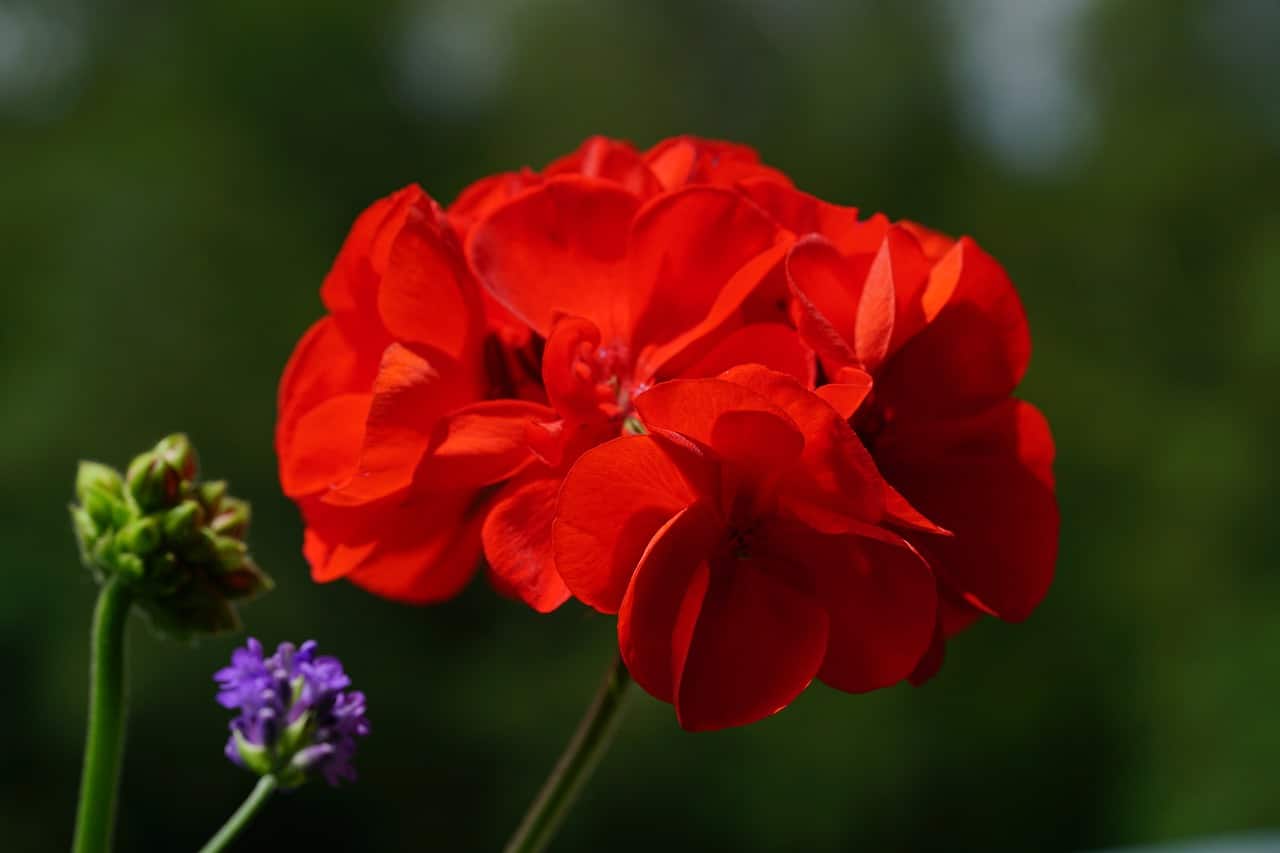There are a few steps to follow if you want to know how to root geraniums from cuttings including time, container, mixture, and place, to name a few. Geraniums are prominent houseplants, since they are very prolific, tough, and straightforward to maintain.
Perhaps, you would want to learn how to root geraniums from cuttings because you’ve known that they’re also easy to propagate. In this guide, we’ll follow some simple steps in rooting geraniums from cuttings. Let’s delve further.

Steps In Rooting Geraniums From Cuttings
Growing geraniums from cuttings is exciting. It is because you can maintain the breed of the mother plant, at the same time, ensure fresh flowers with the young plant. Don’t worry though; the steps are very easy. But, you need to have patience and passion to accomplish the process.
#1 Selecting the right time to do the rooting
The best times to root geraniums are during late summer and early spring. But, it is worth noting that these plants don’t have a dormant period. This means that they can grow the year round, without needing to wait for a certain time of the year. Perhaps, this is one of the greatest advantages if you have geraniums.
With that being said, you can always do this process any time- fall, summer, or spring. Still, you’ll be guaranteed of a healthy cutting. But then, if you perform this process earlier, the flowers will bloom that summer. Later cuttings, on the other hand, will flower the next summer.
#2 Choosing a healthy geranium
You just can’t root an unhealthy shoot, obviously. It is important for you to know which the healthy shoots are; those squat and fat shoots are a great idea.
If the plant appears healthy and it is not flowering, then it’s a good option. However, if you don’t have any choice, then you can use the flowering shoot (though it should be your last option).
#3 Taking the cuts
In cutting the shoots, you need to have a sharp knife or a clean scalpel. Don’t use secateurs; it’s not ideal to cut the shoots, it might crush them. When cutting, do it above the node or the leaf joint.
The shoot can be cut off at a length of around 3 to 4 inches. But if the plant is already small, the length to cut should be half.
#4 Trimming the cut
Get rid of the scales and leaves found in the base of the stalk. When trimming, make sure that it’s done just below the node. You can just leave the leaves at the top (two or more will do).
Also, you can remove flower buds, if you take the flowering shoot. For as long as they are found in the bottom half of the cutting, remove them. Then, cut the stem below the node; it is where the plant’s hormone is concentrated.
#5 Aiding the cut
Now, it’s time for you to decide whether or not you will use some aid for the cutting. Some planters use a rooting hormone to ensure root growth. Well, others recommend to dip the cuttings to honey; they use it as a root hormone. This process is optional, so the discretion lies to you.
Do avoid root hormone powders though. This kind of root hormone is not needed by geraniums; it may hinder their growth.
#6 Preparing the containers
You can either use a peat-based seed compost or a cutting compost. If these organic matters are not accessible, you can always DIY using equal parts of sharp sand and peat.
In terms of the size, it depends upon the number of cuttings. For individual cuttings, you can use a container with a size of around 3 inches; while for up to 5 cuttings, you can opt for the 5 inches.
#7 Making holes in your potting mix
Get a pencil or dibble and use it to make holes in the potting mix. Anyway, you can use your finger; but make sure to clean it afterwards. It’s best to place the holes near the edges so it will be easier for water to drain later on.
#8 Inserting the cut and watering it
This is very simple; you just have to insert the cut in your potting mix. Be slow and sure. In order for the compost to keep its moisture, water the cutting. It should also be done lightly.
Overwatering can be detrimental to the cutting. If you cover it with water, there’s a risk of the growth of botrytis, a mold that can lead to decomposition and decay. This will most likely hinder the growth of your geranium.
#9 Placing in the right spot
The cutting requires a warm place to live in. Remember though that it should not be exposed to direct sunlight. Perhaps, a sunny windowsill will suffice. Also, you can use a propagator or a heating mat. For as long as the area is shaded, it’s the best choice.
#10 Growing roots
When watering the cutting, make sure that you do it lightly. Also, keep the compost dry. Roots may appear within 3 days, depending upon the variety of the geranium. Others take it longer to root, especially if it’s cool.
Conclusion
Now that you know how to root geraniums from cuttings, it’s time for you to do it for yourself. As you can see, the process is very straightforward. Make sure that you follow each step religiously to get the best results.
